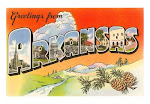Introduction:
Use the following poem for a poetry break in the classroom. Have the children quietly look outside the window and take note of the things they see outside. After a few moments, read the poem Right Outside My Window.
Right Outside My Window
by Mary Ann Hoberman
There's always something new to see
Right outside my window.
Each day I wonder what will be
Right outside my window.
In spring the wind whips up a kite
Right outside my window.
Silver raindrops catch the light
Right outside my window.
Clouds sail in the summer sky
Right outside my window.
A baby bird begins to fly
Right outside my window.
Falling leaves drift to the ground
Right outside my window.
A spider weaves her web around
Right outside my window.
Snowflakes tumble soft and white
Right outside my window.
The moon shines in to say goodnight
Right outside my window.
Summer, autumn, winter, spring,
Right outside my window.
What brand new changes will they bring
Right outside my window.
Right Outside My Window, by Mary Ann Hoberman; illustrated by Nicholas Wilton; Mondo Publishing, 2002.
Extension:
After reading the poem, ask the children to share what they see outside the window. Let them discuss, write about or illustrate their observations.
Another approach to sharing this poem would be to invite the children to close their eyes while you read the poem. Ask them to visualize the images in the poem. After a few moments, with eyes still closed, ask children to imagine other things that they might see outside a window. Let them share if they like. Let the whole class refrain, right outside my window, after each person shares.
Read the poem again showing the illustrations in the book.
Write down the children's suggestions of what they see outside a window. Include "Right outside my window" between each line. Read the new poem aloud, allowing the children to read their own lines or letting them read each others. Encourage them to use rhyming words, and pair lines accordingly.
***********************************************************
POETRY BOOK REVIEW: MULTICULTURAL-- A book of poetry for children or teens by a poet (or poets) of color published since 1995
The Blacker the Berry by Joyce Carol Thomas; illustrated by Floyd Cooper. HarperCollins, 2008.
Introduction:
The Blacker the Berry: Poems by Joyce Carol Thomas and illustrated by Floyd Cooper was given the 2009 Corretta Scott King Award for illustrations. It was also named a Coretta Scott King author honor book.

This collection of poems uses the metaphor of berries and their colors to celebrate the range of skin colors of african american children. The illustrations portray african american boys and girls with all shades of skin color , from the darkest eggplant, to the lightest milky.
Extension:
Talk with children about different skin colors, hair colors, eye colors.
Have children draw and color self portraits with careful attention to these attributes.
Have berries for snack. Examine, compare and taste the difference between the different types of berries.
*************************************************************
POETRY CHOICE: DOUGLAS FLORIAN
Comets, Stars, the Moon and Mars: Space Poems and Paintings, written and illustrated by Douglas Florian. Houghton Mifflin Harcourt, 2007

Book Review:
What a wonderful poetry collection and beautifully illustrated book about space and the planets! There is a poem about each planet, plus interesting facts and colorful illustrations. The mixed media illustrations are whimsically done in bold watercolors and collage. Flipping through the pages gives the reader the feeling of floating in the night sky, through galaxies, past stars, and around planets. Unexpected pleasures are circular cut-outs on some pages and a galactic glossary at the end of the book.
Poetry Break
Introduction:
Use this book with children who are studying space and the solar system.
Extension:
Begin by reading the The Universe.
The Universe
by Douglass Florian
The universe is every place,
Including all the e m p t y space.
It's every star and galaxy,
All objects of astronomy,
Geography, zoology
(Each cat and dog and bumblebee),
All persons throughout history-
Including you,
Including me.
Read a poem about each planet as it is studied.
Have each student choose a planet poem to read, study and illustrate.
Discuss the Galactic Glossary in the back of the book.
Examine the art in the book, identifying elements in the collages.
Make a solar system collage as a group project.



No comments:
Post a Comment